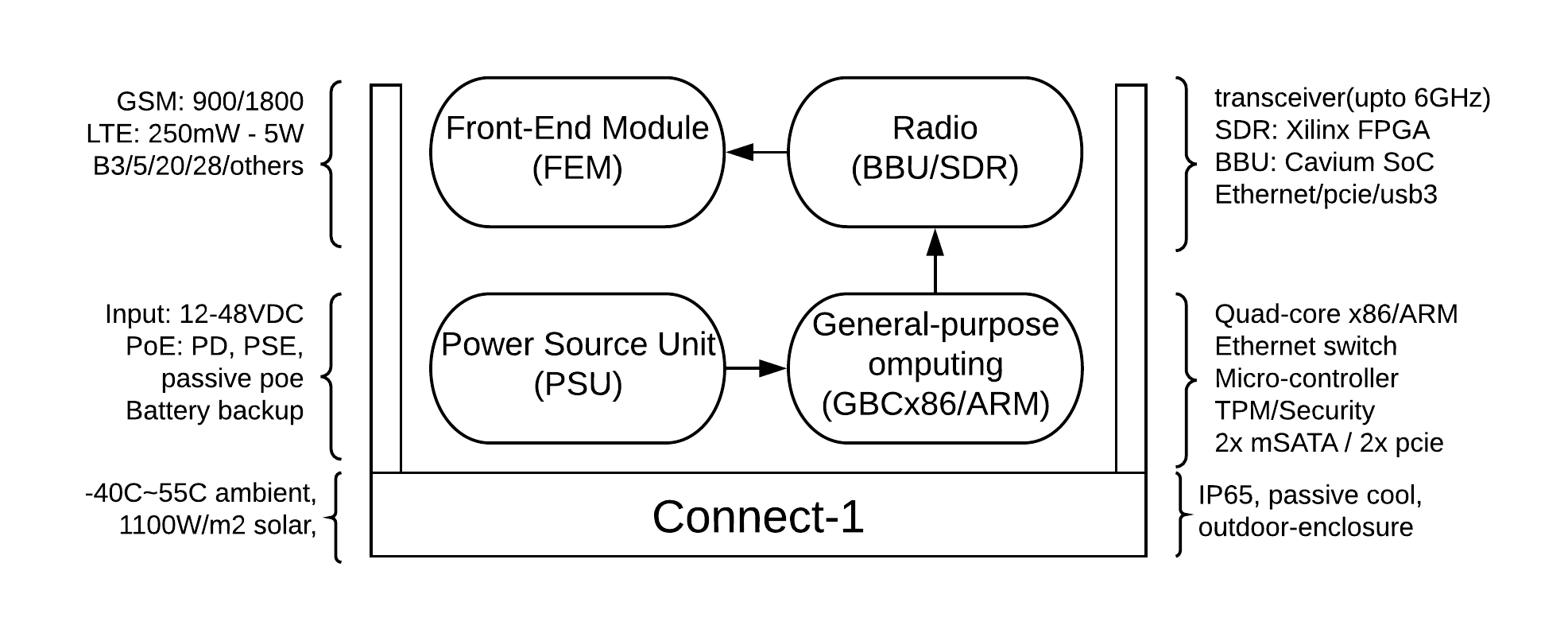-
Notifications
You must be signed in to change notification settings - Fork 38
what is OpenCellular
As of the end of 2015, more than 4 billion people were still not connected to the internet, and 10% of the world's population were living outside the range of cellular connectivity. Despite the widespread global adoption of mobile phones over the last 20 years, the cellular infrastructure required to support basic connectivity and more advanced capabilities like broadband is still unavailable or unaffordable in many parts of the world. Conventional cellular infrastructure methods are unattainable for the rural connectivity challenge and a paradigm shift is needed.
Significantly high Total Cost of Ownership (TCO), combined with low ARPU, hinder expanding cellular coverage into low population density rural areas where the last 1.5 billion people are living. The OpenCellular project is an ecosystem of rural-optimized, modular and sustainable open-source solutions, addressing access, power, site manageability and backhaul sub-systems with innovative bottom-up deployment models.
In many cellular network deployments, specially in rural area, the cost of the civil and supporting infrastructure (land, tower, security, power, and backhaul) is often much greater than the cost of the cellular access point itself. One of our technical goals is to make architectural and design improvements that would result in lower TCO associated with the building, running and maintaining the rural cellular networks. It achieves this by designing the systems which can leverage local context — the skills, knowledge, and affordances of the rural communities — employing following four main design principles:
- Community coverage deployment model, rather then conventional geographical coverage.

- Modular design to enabling various capacity and coverage for existing and forthcoming cellular, wireless standards and functionality.

- Scalable solution for various population densities — for communities as small as a few hundred people.

- Lower TCO, CAPEX and OPEX, for rural areas low ARPU to enable broader range of business models including traditional and community-focused.
Other important design principle are:
-
Simplified installation, maintenance and support to minimize operational and support costs.
-
Enable maximum utilization of existing and locally available infrastructure (pole, backhaul, power) to minimize civil costs.
-
Localized manufacturing and lightweight supply chain to enable new OEM, ODM and System Integrators.
The aim of OpenCellular project is to enable network and community operators to deploy cellular networks in low population density rural areas with creative business and deployment models. The vision of the OpenCellular project is to create an open and accessible technology aiding everyone to employ sustainable cellular network for rural communities. OpenCellular core philosophy is design once, buy from any, deploy and support by many and it achieves this by adopting open-source methodology for its design, testing and production.
OpenCellular | Open-Source Rural Access | Tower to the People | Democratizing Access